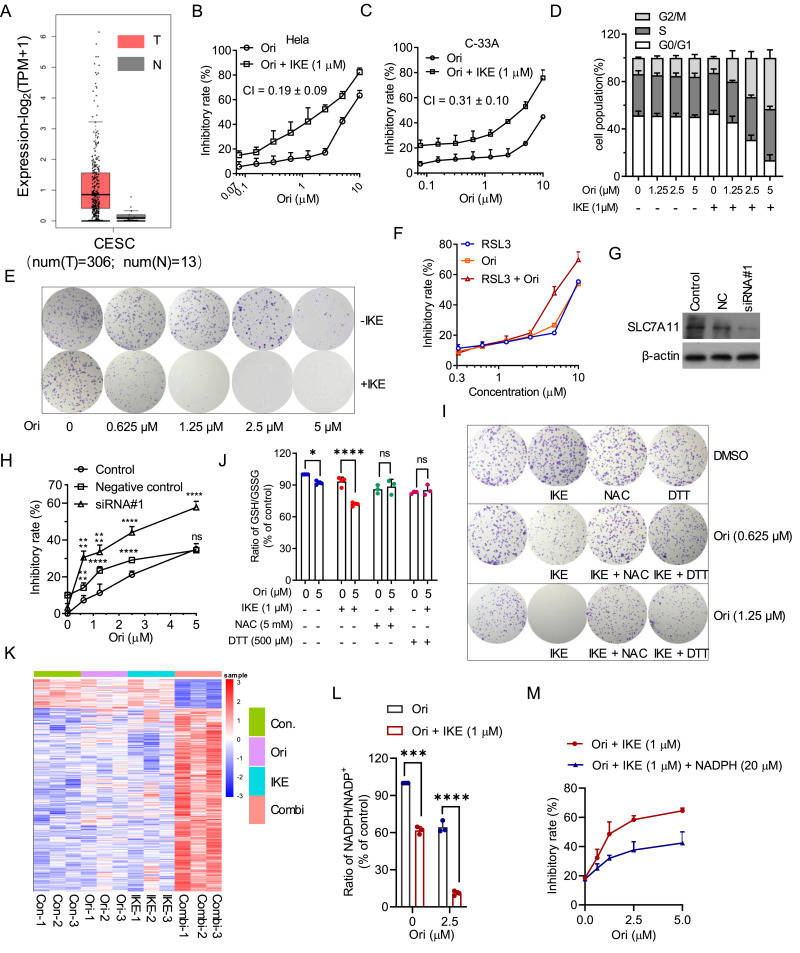
The combination of SLC7A11 inhibitor and oridonin synergistically inhibits cervical cancer cell growth by decreasing the NADPH/NADP+ ratio


SLC7A11, as the core component of system xc−, protects cancer cells from oxidative-stress-induced cell death like ferroptosis by mediating cystine uptake. Recent studies revealed that SLC7A11 is widely overexpressed in various types of cancer, and inhibition of SLC7A11 could inhibit tumor growth.1 Consistently, SLC7A11 was overexpressed in cervical cancer, and the expression of SLC7A11 was associated with the severity of cervical cancer (Fig. 1A; Fig. S1A), making SLC7A11 a promising anti-tumor target. However, SLC7A11 inhibitor imidazole ketone erastin (IKE) alone exerts weak antiproliferative effects in cervical cancer cells (Fig. S1D). Oridonin is isolated from the traditional Chinese herbal Rabdosia rubescens and exhibits mild anti-cancer activity against multiple types of tumor cells, including cervical cancer cells. However, the low bioavailability and dose-dependent toxicity of oridonin hinder its clinical application.2 Here, we first discovered that combination of SLC7A11 inhibitors and oridonin synergistically inhibited cervical cancer cell growth. Then the pharmacological effect and underlying mechanism of the combination of SLC7A11 inhibitors and oridonin were explored.
